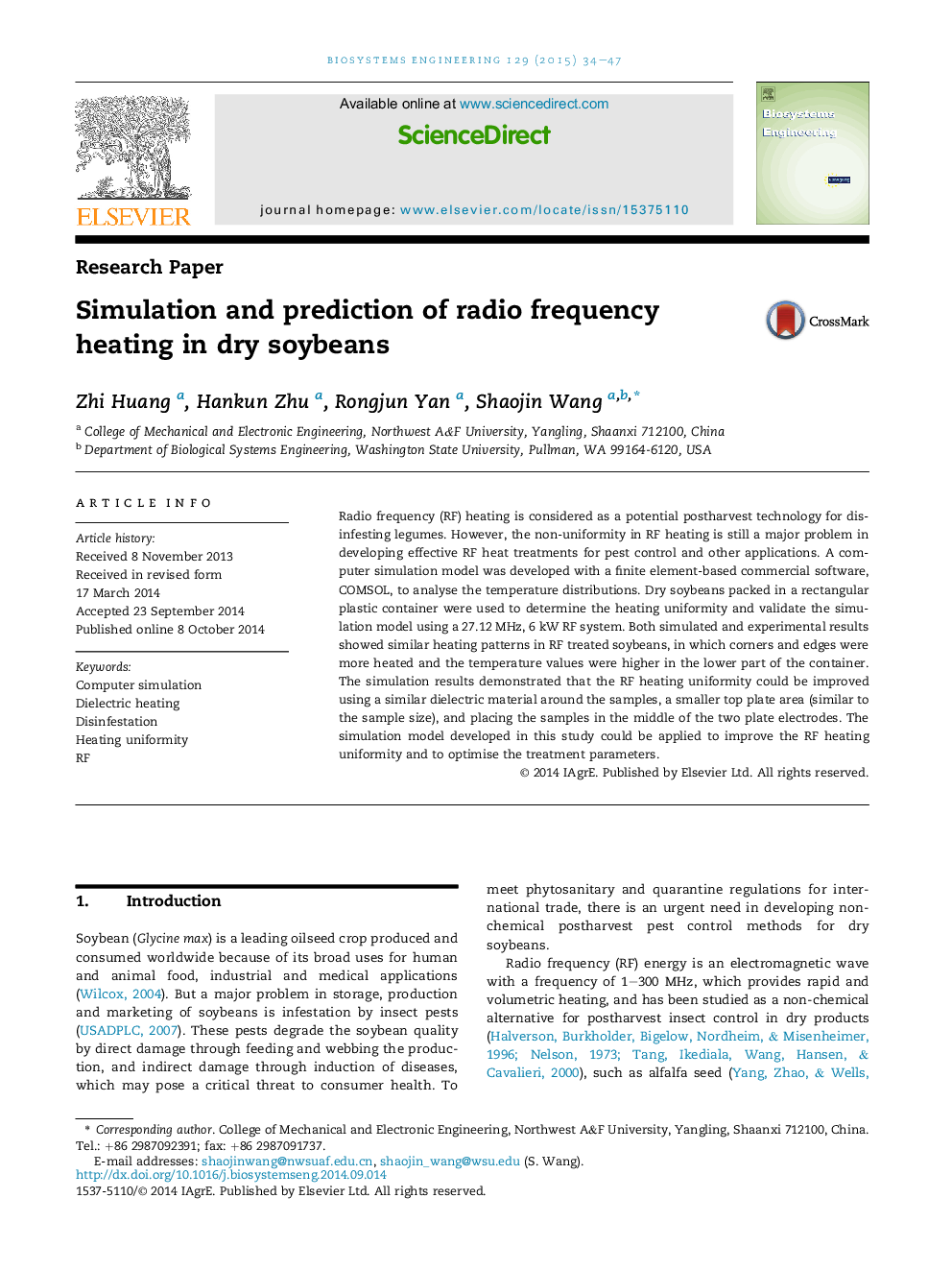| Article ID | Journal | Published Year | Pages | File Type |
|---|---|---|---|---|
| 1711049 | Biosystems Engineering | 2015 | 14 Pages |
•A simulation model was developed to analyse temperature distributions.•The model was validated with dried soybeans in a RF system.•Corners and edges were heated more than center areas in all layers.•Validated model could be used to improve RF heating uniformity.
Radio frequency (RF) heating is considered as a potential postharvest technology for disinfesting legumes. However, the non-uniformity in RF heating is still a major problem in developing effective RF heat treatments for pest control and other applications. A computer simulation model was developed with a finite element-based commercial software, COMSOL, to analyse the temperature distributions. Dry soybeans packed in a rectangular plastic container were used to determine the heating uniformity and validate the simulation model using a 27.12 MHz, 6 kW RF system. Both simulated and experimental results showed similar heating patterns in RF treated soybeans, in which corners and edges were more heated and the temperature values were higher in the lower part of the container. The simulation results demonstrated that the RF heating uniformity could be improved using a similar dielectric material around the samples, a smaller top plate area (similar to the sample size), and placing the samples in the middle of the two plate electrodes. The simulation model developed in this study could be applied to improve the RF heating uniformity and to optimise the treatment parameters.
